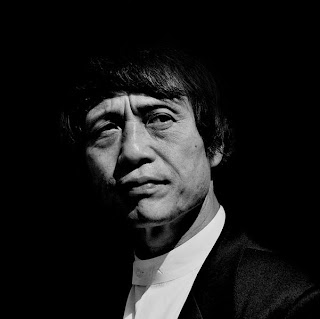Tadao Ando (安藤 忠雄 Andō Tadao, born September 13, 1941, in Osaka, Japan) is a Japanese architect whose approach to architecture was once categorized by Francesco Dal Co as critical regionalism. Ando has led a storied life, working as a truck driver and boxer prior to settling on the profession of architecture, despite never having taken formal training in the field. In 1995, Ando won the Pritzker Architecture Prize, considered the highest distinction in the field of architecture. The architect's buildings are often characterized by complex three-dimensional circulation paths. These paths interweave between interior and exterior spaces formed both inside large-scale geometric shapes and in the spaces between them.
 |
| Tadao Ando |
His "Row House in Sumiyoshi" (Azuma House, 住吉の長屋), a small two-story, cast-in-place concrete house completed in 1976, is an early Ando work which began to show elements of his characteristic style. It consists of three equally sized rectangular volumes: two enclosed volumes of interior spaces separated by an open courtyard. Ando's housing complex at Rokko, just outside Kobe, is a complex warren of terraces and balconies and atriums and shafts.
The designs for Rokko Housing One (1983) and for Rokko Housing Two (1993) illustrate a range of issues in the traditional architectural vocabulary—the interplay of solid and void, the alternatives of open and closed, the contrasts of light and darkness. More significantly, Ando's noteworthy achievement in these clustered buildings is site specific—the structures survived undamaged after the Great Hanshin Earthquake of 1995. New York Times architectural critic Paul Goldberger argues convincingly that "Ando is right in the Japanese tradition: spareness has always been a part of Japanese architecture, at least since the 16th century; [and] it is not without reason that Frank Lloyd Wright more freely admitted to the influences of Japanese architecture than of anything American." Like, Wright's Imperial Hotel in Tokyo, which did survive the Great Kanto Earthquake of 1923, site specific decision-making, anticipates seismic activity in Ando's several Hyōgo-Awaji buildings.
Gallery
 |
| Galleria Akka |
 |
| Langen Foundation |
 |
| Azuma House |
 |
| Hyogo Prefectural Museum of Art, Kobe |
 |
| Westin Awaji Island hotel |









0 comments:
Post a Comment